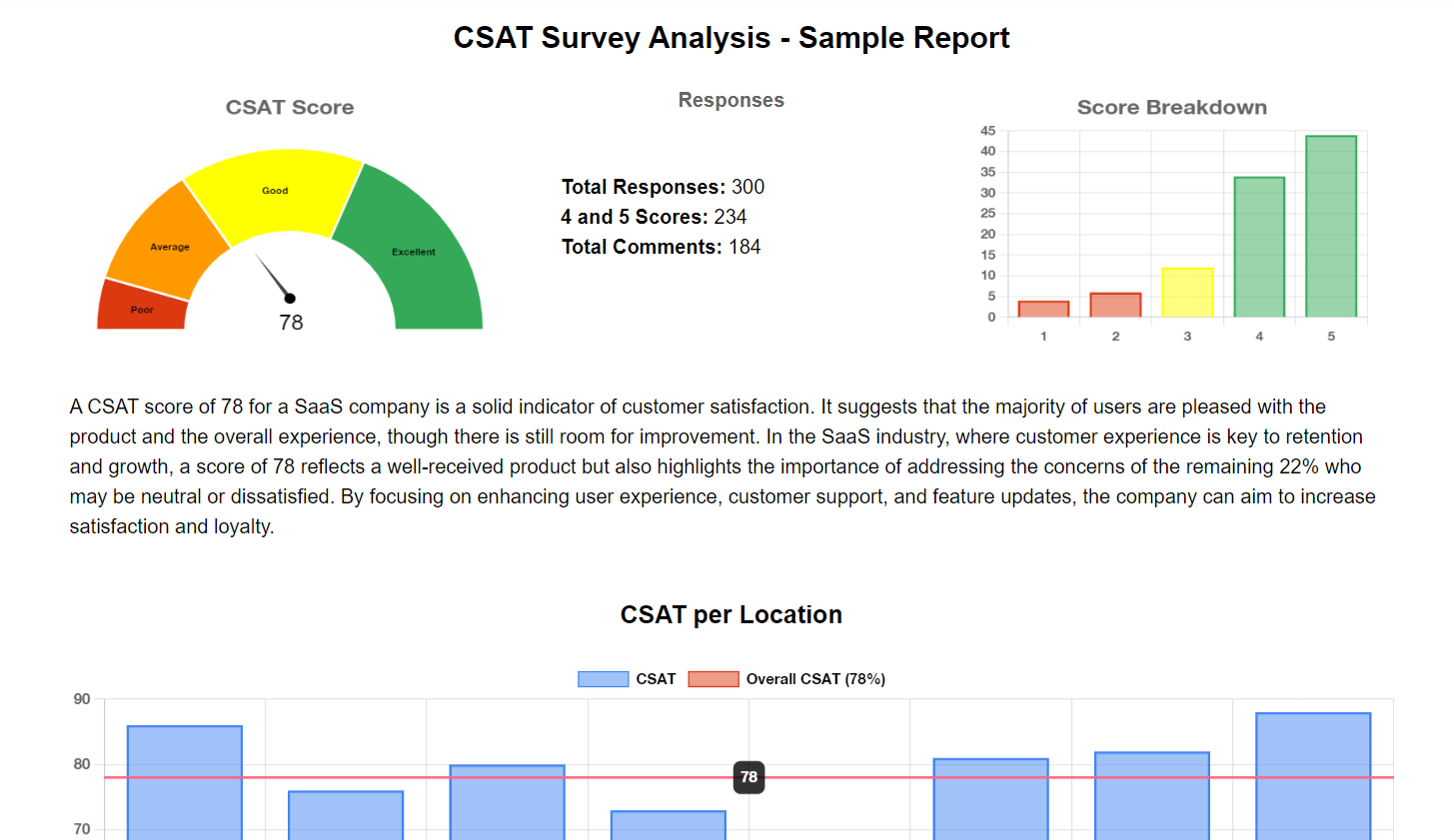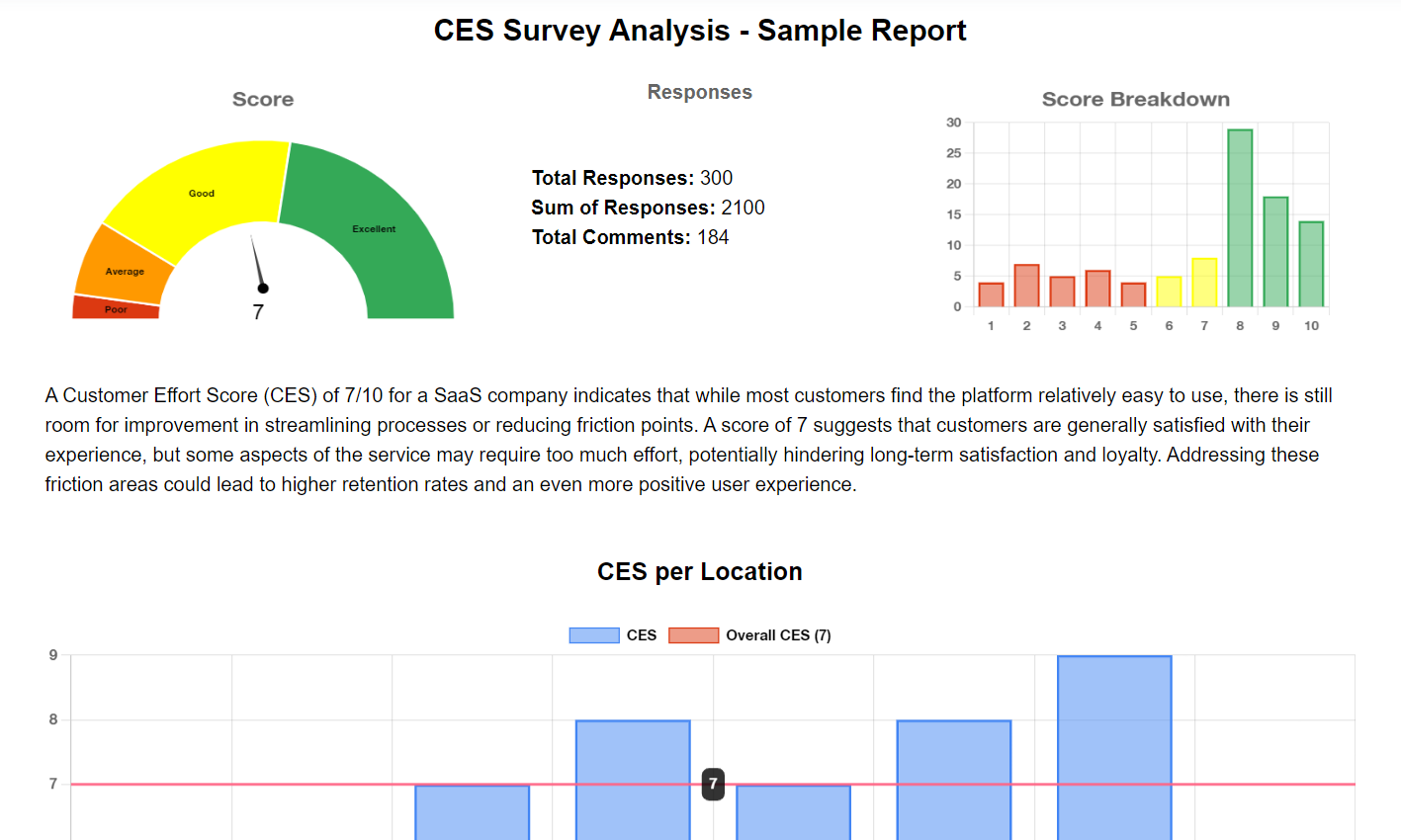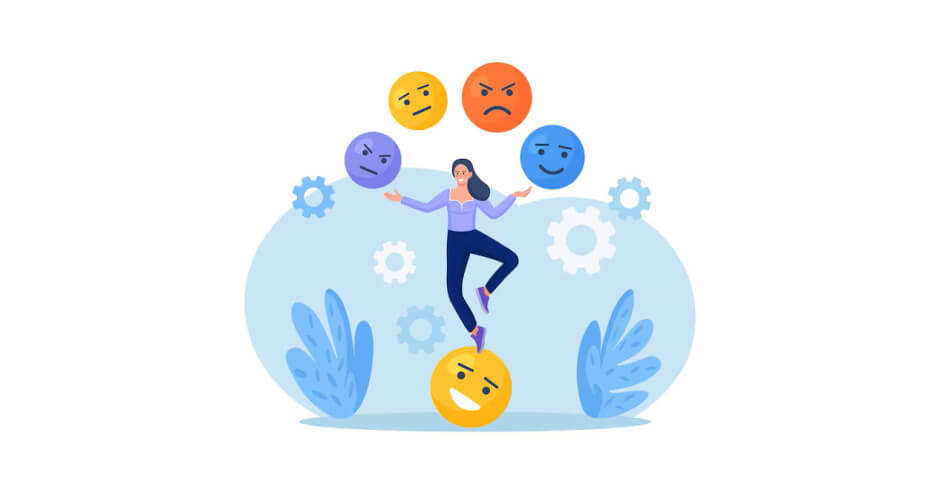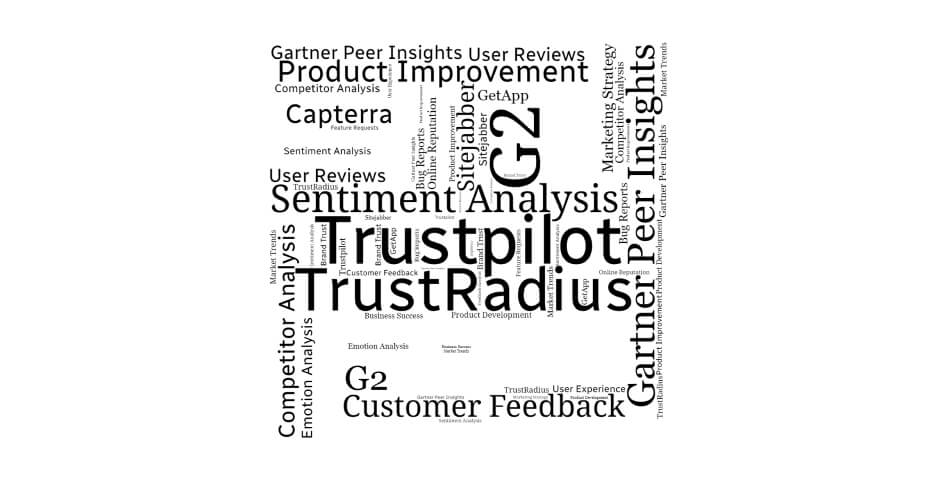A Complete Handbook for Customer Feedback Analysis
- Emma Bennett
- 02 Oct, 2024

In today’s fast-paced world of business, one can’t stress how important it is to learn about our customers. The analysis of customer feedback plays a big role in how companies shape their products, services, and experience. Of course, digging into what customers are saying provides key insights that can drive growth and build loyalty. This all-inclusive guide will delve deeper into the ins and outs of customer feedback analysis that will help businesses get the most out of this important practice. We begin by explaining what customer feedback analysis is and why it matters. Then, we delve into the main benefits of such an analysis; see some effective means of feedback collection. Next, a step-by-step guide to analyzing customer feedback, introducing several handy tools and technologies, and continuing with discussing how to put those insights into action. By the end of this article, you will have a good understanding of using customer feedback analytics in growing your business by keeping your customers wanting more.
What is Customer Feedback Analysis?
Definition
Customer feedback analysis is the systematic process of examining and interpreting the information, insights, and opinions that customers provide about a company’s products or services. It involves collecting, organizing, and evaluating various types of feedback data to gain a deeper understanding of customer experiences, preferences, and pain points. This analysis helps businesses make informed decisions to enhance their offerings and improve overall customer satisfaction.
Importance
Customer feedback analysis undeniably plays a pivotally important role in the competitive business world today. It is a direct look into the mind of the customer; hence, companies do not have to assume or guess. By listening to the voice of customers, businesses can achieve customer satisfaction measurement, identification of flaws in their respective products or services, and also locations of optimization opportunities. It is a crucial component that helps drive business growth. It helps the company to customize their products and services to customer needs, thereby building loyalty and retention among the customers. In addition, it can show the up-and-down market trends, therefore putting the business at the helm of competition.
Another million other reasons for analysis of customer feedback are brand reputation management. The proactive engagement through feedback on any channel reflects commitment from the company towards customer satisfaction, while negative reviews can be minimalized in this manner. This may bring positive reviews and brand advocacy as satisfied customers are more likely to recommend the company to others.
Types of feedback data
Customer feedback comes in various forms, each providing unique insights into the customer experience. Here are some common types of feedback data:
- Surveys: These include Net Promoter Score (NPS), Customer Satisfaction (CSAT), and Customer Effort Score (CES) surveys. They offer a structured way to collect quantitative data on customer sentiment.
- Reviews: These are often publicly shared opinions that can influence potential customers and provide valuable insights into product strengths and weaknesses.
- Support interactions: Customer support calls, live chats, and email correspondence offer real-time feedback and context around customer issues.
- In-app feedback: This allows businesses to collect targeted, granular feedback within the product or service itself.
- Behavioral data: By analyzing customer actions and interactions with a product or platform, businesses can gain insights without directly asking for feedback.
- Open-ended responses: These provide qualitative data that can offer deeper insights into customer motivations and experiences.
To effectively analyze these diverse types of feedback, businesses often employ various techniques such as sentiment analysis, word frequency analysis, and thematic analysis. These methods help categorize feedback as positive, negative, or neutral, identify common themes, and extract actionable insights from the data.
By leveraging a combination of these feedback types and analysis techniques, businesses can gain a comprehensive understanding of their customers’ needs and experiences, ultimately driving improvements in their products, services, and overall customer experience.
Key Benefits of Analyzing Customer Feedback
Analyzing customer feedback has a significant impact on businesses, offering numerous advantages that can drive growth and success. By carefully examining the insights provided by customers, companies can gain valuable knowledge to enhance their products, services, and overall customer experience.
Improved customer experience
One of the important values of customer feedback analysis is increasing the level of customer experience. If the company hears its customers’ say, it identifies their pain points, preferences, and expectations. This understanding lets companies make improvements that directly touch customer needs. For instance, analyzing the trends and patterns in feedback helps a business identify recurring issues or feature requests. It helps them focus the enhancement efforts on those points that would bring maximum improvements in customer satisfaction. Additionally, customer feedback is used to form a valuable context of understanding product performance metrics, which explains ‘why’. Customers will more likely feel valued and appreciated when they see suggestions implemented and frustrations addressed. This may also result in a positive relationship between a business and its customer base by increasing satisfaction and loyalty.
Increased customer retention
Customer feedback analysis is very important in order to increase customer retention. Once customers see that an enterprise is actually listening and making changes according to their suggestions, then they start developing trust in the brand and gaining confidence in it. The sense of being heard and valued could make a great impression on the mind of the customer regarding long-term retention with the enterprise. Additionally, it is through active feedback solicitation and analysis that businesses can take note of the problem at an early stage, even before the issues actually result in ‘churn’. With that kind of proactive attitude, companies should be in a position to take remedial actions over such issues without any delay and convert the negative conditions into positive ones. In such a process, customers retain a high probability of being retained to continue their business with the company.
Product/service enhancements
Customer feedback analysis acts like a compass that guides product and service improvements. It directly gives insight into what customers want, need, and expect from the business offerings. Such information would allow a company to make correct data-driven decisions in refining and enhancing its products or services. It also aids a business by helping it prioritize feature development and improvements. It makes them certain about which functionality users value the most and makes resource allocation decisions easier, as such. Secondly, tools like in-app feedback widgets may be very helpful for real-time input regarding new features and product design that can boost feature adoption and user satisfaction. In addition, customer feedback may be an innovation trigger showing new opportunities. By noting suggestions and pain points of customers, product ideas might develop that otherwise would not have been perceived by businesses. It is this kind of innovation that helps these products stay relevant out there in the competitive market and helps in building a relationship collaboratively with the customer base. Last but not least, analysis of customer feedback offers loads of advantages, all of which can make a big difference in the success of any given business. From improving customer experiences and increasing retention rates, the drive for product improvements and innovations, analytics of customer feedback have become one of the potent tools that firms can use to thrive in today’s competitive landscape.
Effective Methods for Collecting Customer Feedback
To gain valuable insights into customer experiences and preferences, we need to employ various methods for collecting feedback. By using a mix of approaches, we can gather both quantitative and qualitative data to analyze customer feedback effectively.
Surveys
Surveys are one of the most popular and efficient ways to collect customer feedback. We use different types of surveys to gather specific information:
- Customer Satisfaction (CSAT) surveys: These help us understand how satisfied customers are with specific touchpoints or interactions. We ask customers to rate their experience and provide reasons for their scores. Benty’s free AI-powered CSAT analysis tool allows users to calculate their Customer Satisfaction Score (CSAT) and receive detailed reports, including insights by customer segment, gender, and location. This helps businesses understand customer satisfaction patterns and make targeted improvements to enhance the overall customer experience.

- Net Promoter Score (NPS) surveys: These measure customer loyalty by asking how likely customers are to recommend our product or service. NPS surveys give us insights into long-term customer satisfaction. Benty’s free AI-powered NPS calculator tool helps users calculate their NPS while providing detailed insights and recommendations based on customer segments. This allows businesses to better understand customer satisfaction and identify areas for improvement, ultimately driving customer loyalty and growth.

- Customer Effort Score (CES) surveys: We use these to gage how easy it is for customers to use our product or service. This helps us identify areas where we can reduce friction in the customer experience. Benty’s free AI-powered CES analysis tool allows users to easily calculate their Customer Effort Score, providing a detailed report with insights tailored by customer segments such as location and gender. This helps businesses identify areas where reducing customer effort can improve overall satisfaction and loyalty, leading to a better user experience.

To make our surveys more effective, we keep them brief and respect our customers’ time. We let them know upfront how long the survey will take and use a mix of closed-ended and open-ended questions. This approach allows us to gather quick feedback while still providing opportunities for detailed insights.
Social media monitoring
Social media has become a goldmine for customer feedback analysis. We actively monitor mentions of our brand across various platforms to capture unfiltered insights into customer sentiments, problems, and experiences. To make the most of social media feedback, we:
- Use sentiment analysis tools to categorize mentions as positive, negative, or neutral.
- Track mentions of both our brand and competitors to gain a competitive edge.
- Engage with customers who mention us, showing that we value their input.
Social media monitoring helps us identify potential issues in real-time, allowing us to address customer concerns before they escalate. It also provides valuable insights into which marketing strategies resonate with our audience.
Customer support interactions
Our customer support channels are a rich source of feedback. We analyze interactions from various touchpoints, including phone calls, emails, and chat logs. This helps us understand common issues customers face and identify areas for improvement. To leverage customer support interactions effectively, we:
- Use customer service automation tools to spot patterns in support tickets and bug reports.
- Analyze call recordings and chat logs using text and speech analytics to extract actionable insights.
- Group feedback by volume and category to prioritize product updates and potential feature rollouts.
By analyzing these interactions, we gain valuable insights into customer pain points and can make data-driven decisions to enhance our products and services.
Step-by-Step Guide to Analyzing Customer Feedback
Data collection
The first step in analyzing customer feedback is to gather data from various sources. We use different methods to collect feedback, including surveys, social media monitoring, and customer support interactions. Our aim is to get a comprehensive view of customer opinions and experiences.
We start by sending out surveys like CSAT (Customer Satisfaction), NPS (Net Promoter Score), and CES (Customer Effort Score). These surveys help us measure customer satisfaction, loyalty, and the ease of using our product. We make sure to time these surveys appropriately, usually sending them shortly after a customer interaction or purchase. Social media has become a goldmine for customer feedback analysis. We actively monitor mentions of our brand across platforms to capture unfiltered insights. This approach allows us to identify potential issues in real-time and address customer concerns promptly.
Customer support interactions are another rich source of feedback. We analyze interactions from various touchpoints, including phone calls, emails, and chat logs. This helps us understand common issues customers face and identify areas for improvement.
Categorization
Once we’ve collected the feedback, we categorize it to make sense of the data. We group feedback into categories such as product-related, service-related, and other issues. This categorization helps us identify patterns and prioritize areas that need attention.
For product-related feedback, we look at how long customers have been using the product, their favorite features, and suggestions for improvement. Service-related feedback includes information about how customers feel they were treated, focusing on professionalism, friendliness, and effectiveness. We also pay attention to other issues that might not fit neatly into these categories. For example, we look for feedback about website navigation or app functionality. This comprehensive approach ensures we don’t miss any crucial insights.
Sentiment analysis
Sentiment analysis is a crucial part of our customer feedback analysis process. We use this technique to determine the emotional tone behind customer feedback. It helps us understand whether the overall sentiment is positive, negative, or neutral.
We employ AI-powered tools to scan the text and analyze the language and tone used. This allows us to quickly identify areas where customers are particularly satisfied or dissatisfied. For instance, if we notice a trend of negative sentiment around a specific feature, we can prioritize improvements in that area.
Sentiment analysis also helps us track changes in customer perception over time. By comparing sentiment across different periods, we can gage the effectiveness of our improvements and the impact of new initiatives.
Benty’s free sentiment analysis tool offers users a powerful way to quickly gauge customer feedback and sentiment across various platforms. By simply uploading a document or pasting text, users can obtain a detailed report that includes summary statistics, a sentiment breakdown in the form of a donut chart, and trends over time. This analysis allows businesses to easily identify positive, negative, and neutral feedback, making it easier to prioritize improvements and enhance customer satisfaction. Additionally, the tool extracts key insights and provides actionable recommendations, helping users make data-driven decisions without the need for complex software or expertise.
Trend identification
The final step in our analysis process is identifying trends in the feedback data. We look for recurring themes, common pain points, and frequently requested features. This helps us understand what matters most to our customers and where we should focus our efforts.
We use various techniques to identify trends, including keyword analysis and feedback clustering. Keyword analysis helps us quickly spot common issues or concerns, while feedback clustering allows us to group similar feedback together and identify broader patterns.
By analyzing these trends, we can make data-driven decisions about product improvements, service enhancements, and overall business strategy. This approach ensures that our efforts are aligned with customer needs and expectations, ultimately leading to improved customer satisfaction and loyalty.
Tools and Technologies for Customer Feedback Analysis
In today’s digital age, we have access to a wide array of tools and technologies that make customer feedback analysis more efficient and insightful. These tools help us process vast amounts of data, extract meaningful patterns, and visualize the results in ways that drive actionable insights. Let’s explore some of the key technologies that are revolutionizing the way we analyze customer feedback.
AI-powered feedback analysis tools
Artificial intelligence has become a game-changer in customer feedback analysis. AI-powered tools can process and analyze large volumes of feedback data at incredible speeds, uncovering trends and patterns that might be missed by human analysts. These tools use natural language processing (NLP) to understand the context and sentiment behind customer comments, providing a deeper understanding of customer experiences.
For example, Benty offers powerful tools for users to streamline the process of customer feedback analysis. It automates the extraction of feature requests, bug reports, and sentiment analysis from unstructured feedback, saving users significant time. By consolidating feedback across different channels, users can ensure they never miss valuable insights and can categorize data efficiently. With seamless integration into workflows, Benty also enables teams to quickly act on feedback, such as assigning tasks or responding to customer issues, helping organizations improve their products and services.
Another powerful AI tool is Zendesk QA, which leverages AI to analyze 100 percent of customer interactions, including those between AI agents and customers. Its AI-powered Spotlight feature highlights conversations where a customer has expressed a potential risk for attrition, detecting parts of the conversation where the customer showed dissatisfaction.
Text mining software
Text mining software is crucial for extracting valuable insights from unstructured text data, such as open-ended survey responses, social media comments, and customer reviews. These tools use advanced algorithms to identify key themes, sentiment, and trends within the text.
Medallia enables businesses to capture, analyze, and act on customer and employee feedback in real time, helping organizations improve experiences across multiple touchpoints. By using AI-powered insights, it transforms unstructured data like social media, surveys, and interactions into actionable information. Medallia also integrates with existing systems, allowing companies to create seamless workflows and improve customer satisfaction, loyalty, and employee engagement. This platform benefits users by enhancing decision-making and driving continuous improvement based on real-time, data-driven insights.
Qualtrics, another popular text mining tool, offers solutions for customer experience and employee experience. It uses AI-powered text analytics to provide linguistic categorization, emotion and intent detection, and summarization of data from all digital platforms.
Visualization platforms
Once the data has been collected and analyzed, it’s crucial to present it in a way that’s easy to understand and act upon. Visualization platforms help transform complex data into clear, actionable insights.
Mopinion is an all-in-one customer feedback solution that not only helps collect and analyze feedback but also visualizes it in customizable dashboards and charts. This allows digital teams to share and take action on feedback items in a timely manner.
Hotjar, while primarily known for its user testing and behavior analytics features, also offers visualization tools like heatmaps and user recordings. These visual representations help businesses understand how customers interact with their websites or products, providing valuable context to the feedback data.
By leveraging these advanced tools and technologies, we can transform raw customer feedback into actionable insights, driving improvements in customer experience and ultimately, business success.
Implementing Insights from Customer Feedback Analysis
Once we’ve gathered and analyzed customer feedback, the next crucial step is to put those insights into action. This process involves careful planning, collaboration across departments, and measuring the impact of our changes. Let’s dive into how we can effectively implement the valuable insights we’ve gained from customer feedback analysis.
Action planning
To turn our customer feedback insights into tangible improvements, we need to develop clear and specific action plans. We start by prioritizing the feedback we’ve received, focusing on issues that have the most significant impact on customer satisfaction and loyalty. Using AI-powered analytics tools, we can quickly identify trends and urgent issues that require immediate attention.
We then create detailed plans that outline the steps needed to address these priority areas. For example, if customers have reported slow loading times for our app, we might develop a plan that involves optimizing code, reducing app size, and testing on various devices. We make sure to assign ownership and set deadlines for each task to ensure accountability and timely implementation.
Cross-functional collaboration
Implementing insights from customer feedback analysis isn’t just the responsibility of one team – it requires collaboration across the entire organization. We believe that cross-functional collaboration leads to a more closely aligned company and ultimately results in a more valuable product for our users.
To foster this collaboration, we regularly meet with teams from sales, customer success, tech support, and product development. Each of these departments brings a unique perspective and valuable insights to the table. For instance, our sales team can provide information on what’s currently blocking the top of the funnel progress, while our customer success team can share reasons for low user retention or churn.
We use tools like Google Workspace, Miro, and FigJam to facilitate real-time collaboration and capture ideas from different teams. By involving various departments throughout the development cycle, we ensure that everyone understands what we’re building, why we’re building it, and who we’re building it for. This alignment helps us create features that every person in our organization can feel proud of.
Measuring impact
To understand if our implemented changes are making a difference, we need to measure their impact. We track specific metrics that align with the goals of our feedback actions, such as customer retention rates, Net Promoter Scores (NPS), Customer Satisfaction (CSAT) scores, and Customer Effort Scores (CES).
We compare these metrics before and after implementing our actions to identify noticeable improvements and areas that might need further attention. This data-driven approach helps us refine our feedback processes and action plans, ensuring that we’re continuously improving our customer experience.
By following this structured approach to implementing insights from customer feedback analysis, we can effectively close the feedback loop, retain customers, and potentially turn them into our biggest advocates. Remember, the goal is not just to collect feedback, but to use it strategically to drive growth and exceed customer expectations.
Analyzing Customer Feedback with Benty
Users can greatly benefit from Benty’s free AI-powered customer feedback analysis tool by gaining clear, actionable insights from unstructured customer feedback data. The tool efficiently identifies and categorizes feature requests, bug reports, likes, dislikes, and competitor comparisons, making it easier for businesses to understand customer needs and prioritize improvements. This allows users to respond more effectively to customer demands and improve their products or services based on real-time feedback. Additionally, Benty’s AI-powered analysis helps users save time by automating the review of feedback. Instead of manually sifting through feedback, businesses can focus on the most critical aspects, such as recurring issues or potential product enhancements, highlighted by the report. This streamlined approach promotes better decision-making and supports customer satisfaction improvements, ultimately enhancing customer retention.
To stay informed about the launch of Benty and be among the first users, please leave your email address, and we will notify you when Benty is live 🚀
Conclusion
Customer feedback analysis has a significant impact on shaping business strategies and enhancing customer experiences. By diving into what customers are saying, companies gain valuable insights to improve their products, boost customer satisfaction, and stay ahead in today’s competitive market. The comprehensive approach outlined in this guide equips businesses with the tools and knowledge to collect, analyze, and act on customer feedback effectively.
To wrap up, the key to success lies in not just gathering feedback, but in using it strategically to drive growth and exceed customer expectations. By implementing a robust feedback analysis process, businesses can create a cycle of continuous improvement, turning customer insights into tangible enhancements. This customer-centric approach paves the way for stronger relationships, increased loyalty, and ultimately, long-term business success.


